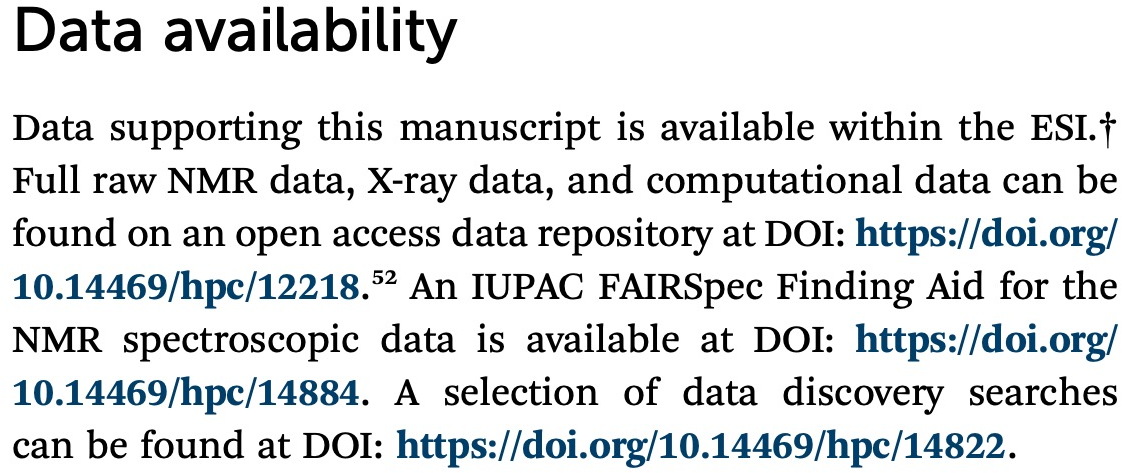Starting around 2016, journal publishers started including mandatory “Data Availability” statements as part of research articles; a typical (dated) example is linked here, including guidelines for how to cite the data itself. I wrote about these aspects last year in a blog post for the RSC journal Digital Discovery[cite]10.26434/chemrxiv-2024-dz2dv[/cite] and here I follow up with more news.
In a recently published article about Direct Amidation Reactions[cite]10.1039/D4SC07744J[/cite], the following version of a data availability statement appears: An IUPAC FAIRSpec Finding Aid for the NMR spectroscopic data is available at DOI: 10.14469/hpc/14884. A selection of data discovery searches can be found at DOI: 10.14469/hpc/14822 and it introduces the concept of a Finding Aid. Put simply, knowing where the data supporting a research is available will not necessarily lead you to the particular datum you might be looking for, especially if there is a lot of data. Data is still frequently made available in the form of a supporting document called ESI, and such documents can contain many tens of compounds and possibly hundreds of associated spectra. The aim of a Finding Aid is to help you find the ones you are interested in.
If you are interested in how this works, go explore either of the two links given above. The Finding Aid tool was created by Bob Hanson as part of an IUPAC working party on how to create spectroscopic data in so-called FAIR form (The F of FAIR and the F of Finding Aid are one and the same of course!). This represents its first deployment for a newly published article. The creation tool itself is still α-stage – further tools are being developed – of which more later.
